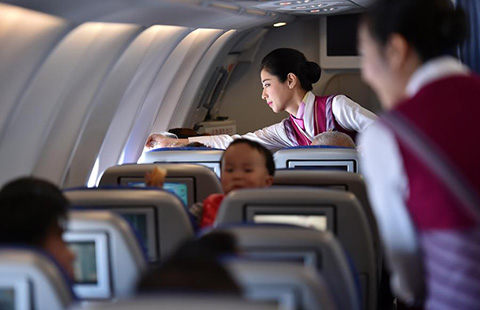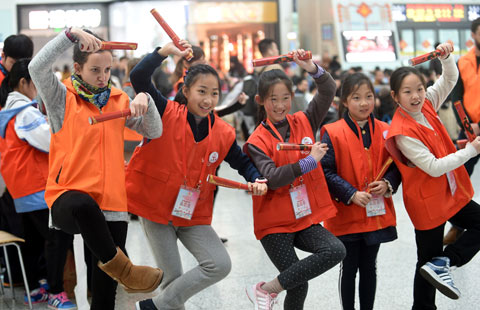Chinese restaurants, industry develop taste for robots
BEIJING - Imagine a robot in a chef's uniform working with a firm dough: noodle strips are peeled off and directly shot into boiling water before diners' eyes can follow the whole process.
The scene is taking place in real life, not at an industrial exhibition, nor in a movie. The robot chef has been "employed" by a restauranteur in Beijing since late February.
Jinhe Noodle Shop, located on the city's Southeast Third Ring Road, looks just like thousands of small eateries standing on Beijing's street corners. It has a dozen tables, selling noodles prepared by the robot chef at around 10 yuan per bowl ($1.6).
"It's cost-effective," said the restauranteur, surnamed Zhao. "A cook doing this job usually asks for 40,000 yuan a year. I bought the robot last month for 10,000 yuan.
"It does a good job! Business is as good as before."
Zhao said the inventor of the robot has a team who will come and help if his new purchase malfunctions.
Inventor Cui Runquan, a 38-year-old farmer from neighboring Hebei province, said he has sold robots like this to more than 3,000 restaurants across China since launching the mechanical avatar in 2010. He obtained his fist patent in 2010, for a mechanical arm, and now has four patents for his invention.
As wages grow by 10 to 20 percent annually in China, the age of the machines is dawning. From small restaurants to big factories, the advent of relatively cheap robots is beginning to change the country's economic landscape.
Industrial robots, with more sophisticated designs than Jinhe Noodle Shop's chef, are entering Chinese factories to take on jobs like welding, painting, ironing and packaging.
"Next year, China is expected to become the world's biggest robot market, with demand for 32,000 industrial robots," according to Zhao Jie, an expert on the subject for China's "863 Program", a State high-tech initiative.
"Chinese companies usually start considering robots when the payment for a skilled worker exceeds 50,000 yuan a year," said Tan Xueke, a manager of the Xinsong Robot Automation Company in Shenyang, capital of Northeast China's Liaoning province.
Tan has the math. A welding robot, for example, can replace the work of three welders. A welding robot currently sells for 150,000 yuan, equal to one year's pay to three welders.
"As a robot can serve for three to five years, it is obviously an economic alternative," said Tan.
As for threats to Chinese jobs, experts say it all depends how fast engineers bring down the cost of robots, and meanwhile, how fast China's labor force shrinks.
Five years ago, a welding robot sold for 500,000 yuan, more than three times their price now, according to Tan.
China experienced a rare decline in its labor force in 2012, the number of working-age people (15-59 year olds) in the country decreasing by 3.45 million to 937.27 million. The trend of an ageing population is set to pose challenges to the world's second-largest economy.
- China's robot sector witnesses increasing demand
- Foxconn plans to robotize Shenzhen plant
- Robots enter catering industry
- Urgent need for self-branded products
- China to become largest robot consumer in 2014
- Robots rule industry fair
- Robotics key to improving industrial efficiency
- Robots help reduce costs

















